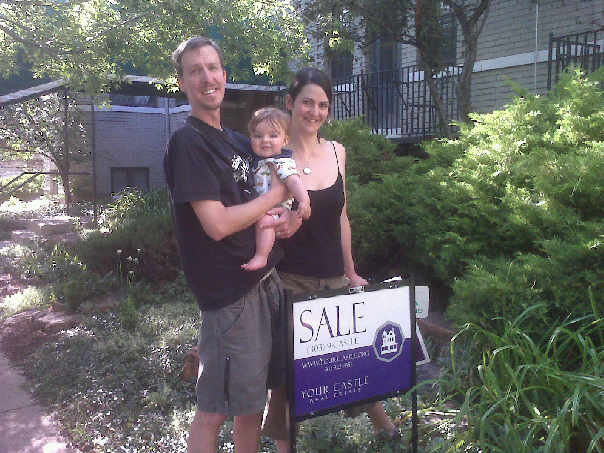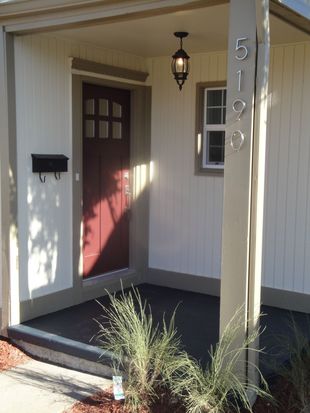 “Conventional wisdom: ‘You’ll never sell your condo in this market.’ Reality: Tracy sold our condo in less than 30 days. Conventional wisdom: “You’ll never find a house that meets all your criteria that’s in your price range!” Reality: With a unique mix of vision and practicality, an almost telepathic understanding of what we were looking for and a keen knowledge of the market, Tracy found us a beautiful new home that fit within our budget. Thank you, Tracy!” -Ellen Graham
“Conventional wisdom: ‘You’ll never sell your condo in this market.’ Reality: Tracy sold our condo in less than 30 days. Conventional wisdom: “You’ll never find a house that meets all your criteria that’s in your price range!” Reality: With a unique mix of vision and practicality, an almost telepathic understanding of what we were looking for and a keen knowledge of the market, Tracy found us a beautiful new home that fit within our budget. Thank you, Tracy!” -Ellen Graham
It’s March and home prices are rising annually, outpacing inflation. Real estate data group, CoreLogic recently released their January 2017 Home Price Index (HPI), showing prices increased 0.7 percent month-over-month and 6.9 percent year-over-year.“A combination of factors is driving momentum ahead of the curve,
says Dr. Frank Nothaft, chief economist of CoreLogic.
“With lean for-sale inventories and low rental vacancy rates, many markets have seen housing prices outpace inflation. Over the 12 months through January of this year, the CoreLogic Home Price Index recorded a 6.9 percent rise in home prices nationally and the CoreLogic Single-Family Rental Index was up 2.7 percent—both rising faster than inflation.”
Accounting for limited available inventory, CoreLogic’s HPI Forecast expects home prices to rise 0.1 percent month-over-month from January to February, and 4.8 percent year-over-year from January 2017 to January 2018.
“Home prices continue to climb across the nation, and the spring home-buying season is shaping up to be one of the strongest in recent memory. A potent mix of progressive economic recovery, demographics, tight housing stocks and continued low mortgage rates are expected to support this robust market outlook for the foreseeable future. We expect the CoreLogic [HPI] to rise 4.8 percent nationally over the next 12 months, buoyed by lack of supply and continued high demand”
adds Frank Martell, president and CEO of CoreLogic.
And according to Realtor.com, spring home-buying season got an early jump this year, indicating record-high home prices and record-low days on market for February. This is especially true for Denver where you’ll see in the chart that showings for February are up over this time last year. Time to move!
 “Tracy worked with me to sell my condo during in a tough market and very challenging circumstances. Tracy’s creative approach (no doubt from her writing and acting background) helped negotiate through the transition with my buyer, overcoming all the buyers concerns and all the HOA hurdles like a track star! It was Tracy’s due diligence to get through this process with ease and grace. I highly recommend Tracy – whatever she attempts is sure to be a success!” -Kathleen M. Rowland
“Tracy worked with me to sell my condo during in a tough market and very challenging circumstances. Tracy’s creative approach (no doubt from her writing and acting background) helped negotiate through the transition with my buyer, overcoming all the buyers concerns and all the HOA hurdles like a track star! It was Tracy’s due diligence to get through this process with ease and grace. I highly recommend Tracy – whatever she attempts is sure to be a success!” -Kathleen M. Rowland
 “Tracy was very helpful and knowledgeable. Worked well together. Sold house in 30 days. Helped us through negotiations explaining everything along the way. Selling a house is very stressful and she made it better.” Quinn Taylor, New Mexico
“Tracy was very helpful and knowledgeable. Worked well together. Sold house in 30 days. Helped us through negotiations explaining everything along the way. Selling a house is very stressful and she made it better.” Quinn Taylor, New Mexico
 “I have worked with Tracy for many years and one of the many things I admire about her is how much she cares about her customers. She really listens and helps to guide her clients into the right properties in the right neighborhoods. She works tirelessly and navigates the ever changing real estate market with professionalization and skill. She is a great asset to the industry. Tracy has helped so many people find the perfect homes and the beautiful part is almost every customer becomes a good friend of hers after the transaction is completed.” -Peter Scudder, lender
“I have worked with Tracy for many years and one of the many things I admire about her is how much she cares about her customers. She really listens and helps to guide her clients into the right properties in the right neighborhoods. She works tirelessly and navigates the ever changing real estate market with professionalization and skill. She is a great asset to the industry. Tracy has helped so many people find the perfect homes and the beautiful part is almost every customer becomes a good friend of hers after the transaction is completed.” -Peter Scudder, lender
 You want to sell your house, right? And you’d like to do that quickly and for the most money possible, right? Here in Denver, where there is very low inventory and buyers compete for properties, our hot market won’t be kind to a seller who doesn’t have his act together. Buyers are savvy, patient, and will pay for what they find value in but they won’t plunk down their life savings for just any old thing. Avoid the following mistakes and you’re on the way to the next chapter of your life.
You want to sell your house, right? And you’d like to do that quickly and for the most money possible, right? Here in Denver, where there is very low inventory and buyers compete for properties, our hot market won’t be kind to a seller who doesn’t have his act together. Buyers are savvy, patient, and will pay for what they find value in but they won’t plunk down their life savings for just any old thing. Avoid the following mistakes and you’re on the way to the next chapter of your life.
1. Clutter, Grime, and Odors. DEAL WITH IT.
Living in our homes, we get used to things and we like them that way. All the family photos and bowling trophies may be family treasures but to a buyer trying to imagine themselves at home, too much information is a turn-off. This includes the way your house smells and how clean it is. And I mean deep clean. If you’re already overwhelmed by the thought of moving, it’s worth it to hire someone to come in and clean. Corners, cupboards, ovens, showers, grout, even windowsills are sometimes neglected in our daily routine. We have what I call an ‘acceptable level of mess’, which is different for each of us. If a very qualified buyer, Miss White Glove, falls in love with your kitchen but is repulsed by the grease under the vent hood, she’ll do one of two things: get over it, or get on to the next showing. Buyers can overlook if your home isn’t “Pottery Barn Perfect” or you have some minor (or major) renovations, they may even feel drawn to take those on. But there’s no reason it can’t be clean.
2. Seller is Home During Showings. TAKE A HIKE.
I know you’re busy and these showings are putting a cramp in your style. Plan for this and treat yourself to some time off. Go to the movies, spend the day with friends or head up to the mountains for a hike (or a weekend). It is inconvenient, keeping the house clean, doing laundry at midnight and emptying the cat box twice a day, but you’ve got to give yourself the best opportunity to sell. Tempting as it is to stay and chat with potential buyers about the many wonderful features of your home, it is not a good idea. Your buyer needs the time and space to fall in love with your home and that won’t happen with you lurking around. If you happen to run into one another, smile and make a quiet, hasty retreat. Let the real estate agent show your home and don’t answer any questions. The Colorado listing agreement states that all negotiation shall be done through the agent and there’s a good reason for this. Oversharing can weaken your bargaining power. So zip it, flip the lights on, put the toilet seats down and take a stroll.
3. Failing to Complete Disclosures. CAVEAT EMPTOR, BABY!
Being upfront about any issues with your home will save you time, money and face. You may not want to mention the time the firetrucks showed up or the time you flooded the basement by running the bath while vacuuming, but if you don’t… Mrs. Kravitz will. Disclosures provide security for both the buyer and seller; both want to feel good about the deal. If you don’t disclose information, chances are it will come up on the Inspection Report, breaking trust between parties and tainting the transaction. There’s nothing worse than having the buyer’s agent call me about an issue that should have been disclosed or having a buyer call me after closing to tell me what the neighbor said about her new dream house. Lack of disclosure plants doubt in the buyer’s minds and complicates negotiations if they feel they’re not being dealt with fairly. Better to just lay your cards on the table from the start.
4. Refusing to Negotiate. MAKE THEM AN OFFER THEY CAN’T REFUSE
The real estate transaction is complex. It is both a business deal and a human transaction; emotional, potentially stressful, full of moving parts. A great Realtor should not only be adept at negotiating; it should be her strong suit. But an agent can only do as their client directs. I advise mine to keep calm, to stay open, and understand that both parties want to feel they’ve won even if it stings a little. The price you ask and the price they offer are not as important as the one we can agree on. Negotiation doesn’t stop when you both sign the contract, it continues for the entire process. Resolving inspection issues, dates and deadlines that may need to be moved, surveys, appraisals- these may need tweaking, rarely do they need arm twisting.
5. Overpricing the Home. WHERE’S THAT OFFER I CAN’T REFUSE?
Selling a home is a business transaction (didn’t I just say that?), but a home is also an emotional commodity. Unlike a product, a hamburger for example, you cannot just slap a $20 price tag on it and call it good. Commodities markets are driven by supply and demand; your house is worth what a buyer is willing to pay for it. Though buyers and sellers have different emotional attachments to homes, they also have different financial ones. What you may attribute as valuable, your buyer may not hold sacred. Pricing a home is more art than science—data driven art. The location, home’s condition, and comparable sold properties determine current market value. Your Realtor will provide you with the data you need to determine the best price for your home to sell in the least amount of time.
6. Limiting Market Exposure. BUT WAIT, THERE’S MORE!
During the housing crisis, Realtors were working hard to sell homes as sellers waited nervously, hoping to avoid making another mortgage payment. To many sellers we weren’t working hard enough. Now that the Denver real estate market is high again, the perception is that we just slap a “For Sale” sign in the front yard, place an ad in the real estate section of the local newspaper and wait for throngs of buyers to beat a path to the door. My job is the same no matter what the market, it’s the timeline that changes. There iFulls a strategy to getting a home in front of as many buyers as possible for maximum exposure and most of that is online. Open houses, direct mail marketing, virtual tours, MLS input, agent networks and social media are some of the things real estate agents use to sell your home quickly. Given most of us have the same toolbox (and there are more), you want to make sure your agent knows how to use them and select which would be the best for your specific property. Ask questions when you interview a Realtor: who do they think is your buyer? What do they think is the best way to catch their attention? What kind of agent network and/or social media presence do they have? Are they set up for mobile platforms? How are they different from any other agent?
I’m happy to answer these questions for potential clients, it gives me a chance to show off 😉
Hello Friends. Sharing a bit of information with you on this beautiful Friday afternoon, aggregated from my sources. It’s a mixed bag… but then what isn’t?
Auto sales, manufacturing, jobs and retail all up. Historically, housing has led the nation out of recessions. This time it is employment, incomes, and trade that will lead housing out. And for several months in a row each of these key indicators is heading in the right direction. Will it be quick? Likely not. But we are headed in the right direction economically speaking for the first time in 2-3 years. Get ready for a slowly improving environment for housing sales in 2011. Does this portend a rebound? Pending home sales jumped in October, showing a positive uptrend since bottoming in June, according to the National Association of Realtors.
The Pending Home Sales Index rose 10.4 percent (for the US) to 89.3 based on contracts signed in October from 80.9 in September. The index remains 20.5 percent below a surge to a cyclical peak of 112.4 in October 2009, which was the highest level since May 2006 when it hit 112.6. The data reflects contracts and not closings, which normally occur with a lag time of one or two months. In the West the index slipped 0.4 percent to 104.3 and is 15.6 percent below a year ago. The US is improving overall but the Western states seem to be lagging in the RE recovery.
Foreclosure homes accounted for 25 percent of all U. S. residential sales in the third quarter of 2010 and the average sales price of properties that sold while in some stage of foreclosure was more than 32 percent below the average sales price of properties not in the foreclosure process — up from a 26 percent discount in the previous quarter and a 29 percent discount in the third quarter of 2009, according to RealtyTrac’s Q3 2010 U. S. Foreclosure Sales Report. A total of 188,748 U. S. properties in some stage of foreclosure sold to third parties in the third quarter, a decrease of 25 percent from the previous quarter and a decrease of nearly 31 percent from the third quarter of 2009. The average sales price of properties not in foreclosure was $249,721, up 6.42 percent from the previous quarter and up 4.36 percent from the third quarter of 2009. Sales volume of non-foreclosure properties decreased 29 percent from the previous quarter and nearly 31 percent from the third quarter of 2009.
And on a smaller note…
McMansions are rapidly becoming the housing equivalent of harvest gold appliances as more Americans are opting for smaller residential footprints, according to a new Relocation.com consumer lifestyle survey. Homeowners and buyers were asked to weigh in on what they saw as the ideal home size. Forty-eight percent of the respondents indicated that their ideal home size would range from 1,000 to 1,999 square feet, while 29 percent prefer homes that are 2,000 to 2,999 square feet. By comparison, five years ago, according to NAHB (National Association of Homebuilders) the average home’s square footage was 2,400 square feet, nearly 400 square feet bigger than what many homebuyers desire today. The survey also found many Americans still find the suburban lifestyle attractive. Desiring a home near the city but still away from the ‘hustle and bustle,’ 54 percent of Americans indicated a preference for living in a suburban neighborhood. Urban and rural neighborhood settings were only preferred by 24 percent and 22 percent, respectively, of survey participants. Surprisingly, the survey revealed that cost of a residence is not the main deciding factor when purchasing a home. In fact, only 29 percent of respondents stated living costs as the most important reason when considering a move.
Home Prices to Stay Flat but Economic Growth Could Strengthen Home prices will remain near their current levels for the next few years but the U. S. economy could grow faster in 2011 than the consensus forecast shows, according to predictions made at the annual business and economic forecast luncheon of the University of Chicago Booth School of Business. Unemployment is expected to stay high for the next few years, the forecasters agreed. NOTE: I would expect prices of smaller homes to do better, and very large home price to decline.
“We will not see a recovery in housing prices in the near term nor do I expect home prices to drop further,” said Erik Hurst, a professor of economics at Chicago Booth and one of the speakers at the event at the Sheraton Chicago hotel. “That is my take it to the bank prediction for 2011.” He cited as reasons the excess supply of houses on the market and continued weak demand from homebuyers.
Economic growth in the U. S. next year as measured by the percent change in GDP, could reach 3.4 percent and exceed the consensus of economic forecasters, according to Randall Kroszner, who served as a governor of the Federal Reserve System from 2006 to 2009 and another speaker at the luncheon.
“I don’t agree with those who say we are in an extended period of low growth,” said Kroszner, a professor of economics at Booth, “but we are unlikely to have a powerful recovery either.”
And for my skeptical readers, I thought I’d throw this in to be fair.
Housing optimists can’t deny market indicators.
BY STEVE BERGSMAN, FRIDAY, DECEMBER 3, 2010.
Inman News
For most metro areas, home prices peaked some time in 2006 and except for a few minor bumps, it’s been all downhill ever since. 2010 has been no exception. So, if we tally up all the annual sales data since 2006, it’s been a four-year run of bad news regarding the direction of housing values.
Enough is enough, you say, and we should begin 2011 with renewed optimism and vigor. I got your back there, but it’s a weak defense, because intersecting trend lines, including an unexpected, but very strong post-tax credit slump and a shadow inventory problem will keep housing prices heading in the same direction — down. Expect another 5 percent to 10 percent decline in housing prices in 2011. Standard & Poor’s credit analyst Erkan Erturk tries to stay optimistic when it comes to reporting about the housing market. “Looking at where we are today as compared to the days of 2008 through mid-2009 when home-price indices (S&P/Case-Shiller) were showing over 10 percent declines on a 12-month basis, the market has, indeed, stabilized, even improved,” Erturk reported. However, that stabilization doesn’t diminish the fact that Standard & Poor’s analysts predict home prices will decline another 7-10 percent in 2011. The good news, Erturk stressed, is that declines have decelerated. The bad news is, the timeline for declines continues to stretch out into the future.
1. First, unemployment is still a major weight on homebuying trends. Not only are unemployment numbers persistently high, but even those citizens with jobs are feeling insecure, all of which means people who would normally be looking for a new house definitely won’t be. Demand continues to trail supply.
2. Secondly, back in November, the Federal Reserve unveiled a new stimulus plan involving the purchase of $600 billion of U.S. Treasuries. It was thought this event would push mortgage rates down. The opposite has happened. Mortgage rates have been going up. Higher mortgage rates will not be helpful in getting more people to buy homes, which, in turn, would stimulate prices upward.
3. More REO inventory on market. Thirdly, after holding back on putting foreclosed and distressed properties back into the market, banks have been getting more aggressive. As these properties leak into local markets at reduced prices, home values cannot move upward. In fact, home prices are more often than not pulled lower.
“If distressed inventory comes into the market slowly, it is always helpful, as the market can digest the new supply,” said Erturk. “At the same time, if they come into the market too slowly, you are prolonging the problem and the market won’t hit bottom for a few more years.”
One of the biggest obstacles to house prices moving higher and not lower is the unexpected aftereffects of the home-purchase tax credit that was successful for what it was designed to do: stimulate demand by enticing buyers into the market. Sambucci is another optimist with bad news. “We don’t like being bearish,” he said, before letting me know that he thinks home prices will decline another 7-9 percent in 2011.
Perhaps the biggest roadblock to getting home prices to reverse direction is shadow inventory overhang. Shadow inventory — and I’ll use S&P’s definition — consists of outstanding properties whose borrowers are, or recently were, 90 days or more delinquent on their mortgage payments, and properties in foreclosure and REOs. According to S&P, the time it will take to clear the supply of distressed homes on the market, or those that need to be resold because of defaults, declined after reaching a peak in mid-2008, but has been on the rise again since fall 2009. As of mid-year 2010, S&P estimated it would take the existing shadow inventory 40 months to clear. Another way to look at this problem is: Approximately 2.09 million properties were in servicers’ foreclosure inventories at the end of October, according to Lender Processing Services Inc. Combined with the number of loans that were 30 days delinquent, the total number of noncurrent loans reached 7.04 million.
One optimist who has mixed the numbers to look almost good is Alex Villacorta, a senior statistician with Clear Capital in Truckee, Calif. Some analysts were saying home prices would decline 5-10 percent in 2011 as far back as September 2010, Villacorta noted, but between August and November 2010 prices had already fallen 7 percent, so the big decline may have happened sooner than later.
“We will see a majority of the falling prices during the winter,” he said. “I don’t think that minimum 5 percent decline will be spread out through all of 2011. If it does occur, it will be in the first part of the year.”
During the housing bubble, individual markets generally moved downward in a consistent line, but now markets are “splintering.” Housing prices in some metros continue to decline, some are stabilizing, and a few have now reached recovery.
“When people talk about national averages, historically, that was OK,” he said. “But with the volatility these markets have seen over last couple of years, it’s a brand-new ballgame.”
Villacorta likes the trend lines for New York and Washington, D.C., and suspects the housing market in those two cities have already hit bottom. He’s a little concerned about Denver, which was moderately affected by the deflation of the housing bubble only to be hit hard by the economic recession. At the bottom of Villacorta’s list are the usual hard-hit areas of the country in Florida, Arizona and California, but taking the crown as the worst of the worst is Las Vegas, where almost three out of four homes have been foreclosed.
Hope you’ve found this interesting and helpful. Now go out and grab yourselves a weekend!
Tracy Shaffer
It was so many years ago and it was yesterday. I was caught in an unfortunate situation, one that was not of my own making… or was it? The world was in chaos as America was suffering from the gaping wounds of 911, I was the mother of two small sons, working in the theatre and watching as my beautiful husband began to unravel. Not unravel like the sleeve edge on a sweater, but the hyper-spin of the Zoom Loom in reverse motion on steroids.








